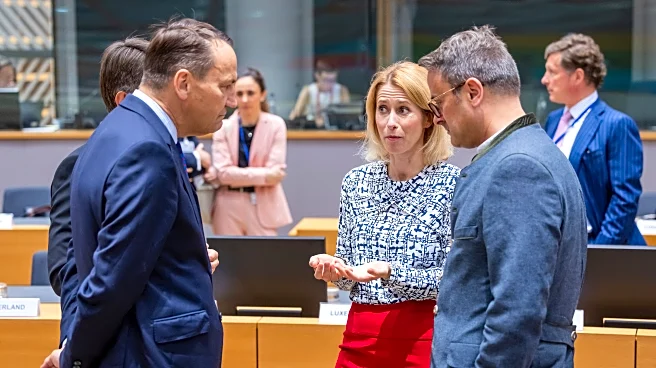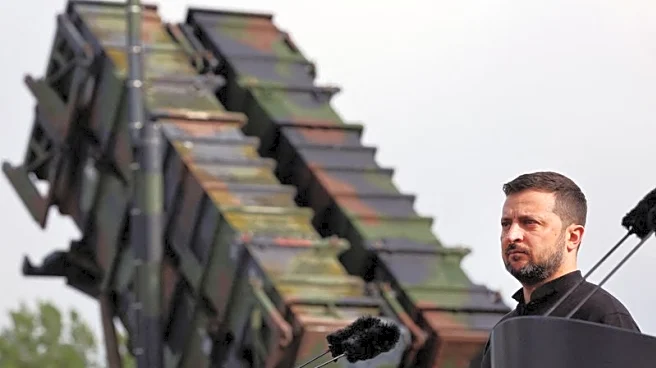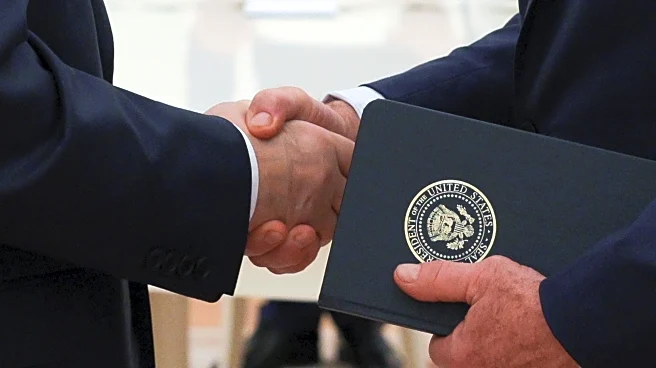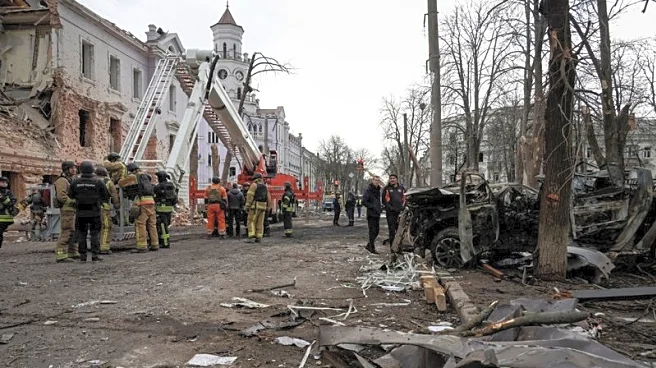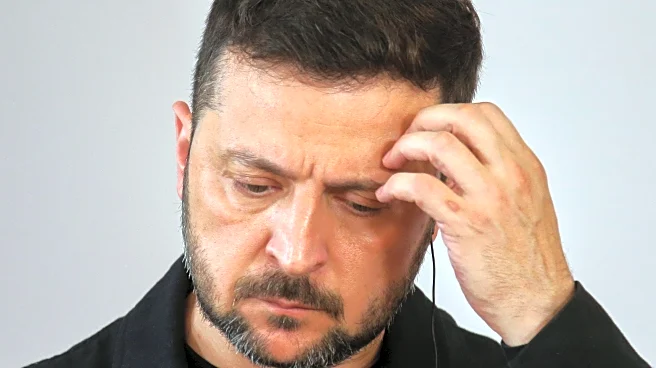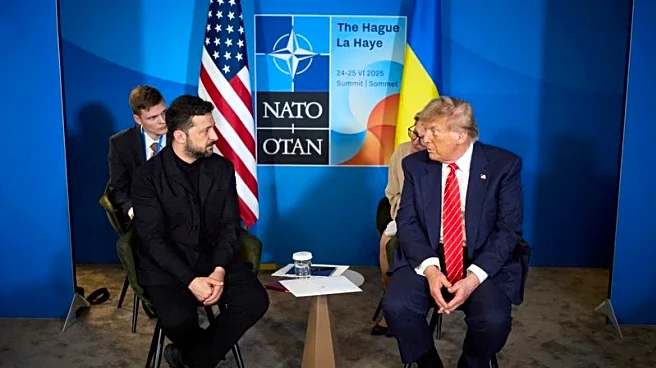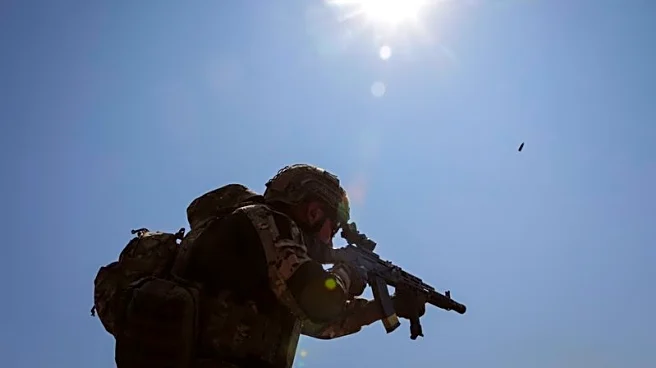By Guy Faulconbridge
LONDON (Reuters) -U.S. President Donald Trump has said that both Kyiv and Moscow will have to cede territory to end the war in Ukraine, so how much territory does Russia control in Ukraine?
Russia controls nearly 114,500 square km (44,600 square miles), or 19%, of Ukraine, including Crimea, and a major chunk of territory in the east and south-east of the country, according to open source maps of the battlefield. Ukraine does not control any internationally recognised Russian territory.
Russia says Crimea, Donetsk, Luhansk, Zaporizhzhia and Kherson - which were recognised by Moscow as part of Ukraine as the Soviet Union collapsed - are now parts of Russia.
Ukraine has repeatedly said it will never recognise Russian occupation of its land, and most countries recognise Ukraine's territory within its 1991 borders.
Following are details on the territory, Russian claims and Ukraine's position.
CRIMEA
Russian forces in 2014 took control of Crimea, which juts out into the Black Sea off southern Ukraine, and after a disputed referendum on joining Russia, Moscow absorbed the region into Russia. Its area is about 27,000 square km.
Russia says Crimea is legally part of Russia. Ukraine's position is that Crimea is part of Ukraine, though privately some Ukrainian officials admit that it would be very hard to return Crimea to Ukrainian control by force.
Crimea was absorbed into the Russian empire by Catherine the Great in the 18th century. Russia's Black Sea naval base at Sevastopol was founded soon afterwards.
In 1921, Crimea became part of Russia within the Soviet Union until 1954, when it was handed to Ukraine, also then a Soviet republic, by Communist Party chief Nikita Khrushchev, an ethnic Ukrainian.
DONBAS
Russia controls about 46,570 square km, or 88%, of the Donbas region of eastern Ukraine, including all of the Luhansk region and 75% of the Donetsk region.
About 6,600 square km is still controlled by Ukraine but Russia has been focusing most of its energy along the front in Donetsk, pushing towards the last remaining major cities.
Russian-backed separatists in the Donetsk and Luhansk regions broke away from Ukrainian government control in 2014 and proclaimed themselves independent "people's republics".
Putin in 2022 recognised them as independent states just days before the invasion of Ukraine.
ZAPORIZHZHIA AND KHERSON
Russian forces control about 74% of the Zaporizhzhia and Kherson regions of southeastern Ukraine, or about 41,176 square km. Ukraine controls about 14,500 square km across the two regions.
Putin in 2024 said that he would be willing to agree peace if Ukraine withdrew from all regions claimed but not fully controlled by Russia - an area currently of about 21,000 square km - and officially renounced its ambitions to join NATO.
Reuters reported in 2024 that Putin was open to discussing a Ukraine ceasefire deal with Trump but ruled out making any major territorial concessions and insisted that Kyiv abandon ambitions to join NATO. Two sources said Putin might be willing to withdraw from the relatively small patches of territory it holds in other areas of Ukraine.
Putin's conditions for peace include a legally binding pledge that NATO will not expand eastwards, Ukrainian neutrality and limits on its armed forces, protection for Russian speakers who live there, and acceptance of Russia's territorial gains, sources told Reuters earlier this year.
KHARKIV, SUMY AND DNIPROPETROVSK
Russia also controls small parts of the Kharkiv, Sumy, Mykolaiv and Dnipropetrovsk regions of Ukraine. Across the Sumy and Kharkiv regions, Russia controls about 400 square km of territory. In Dnipropetrovsk, Russia has a tiny area near the border.
Russia has said it is carving out a buffer zone in Sumy to protect its Kursk region from Ukrainian attack.
LEGAL STATUS OF THE TERRITORIES
Russia classes the Republic of Crimea, Sevastopol, the Luhansk People's Republic, the Donetsk People's Republic, and the regions of Zaporizhzhia and Kherson as subjects of the Russian Federation. Ukraine says the territories are part of Ukraine.
Most countries do not recognise the areas as part of Russia but some do. Crimea has been recognised by Syria, North Korea and Nicaragua. The United Nations General Assembly declared in 2014 the annexation illegal and recognised Crimea as part of Ukraine. The resolution was opposed by 11 countries.
Putin has repeatedly compared the fate of Kosovo and Crimea. He has accused the West of having double standards for recognising Kosovo as an independent country in 2008 against the wishes of Serbia but opposing the recognition of Crimea. Russia opposed the independence of Kosovo.
(Reporting by Guy FaulconbridgeEditing by Andrew Osborn and Gareth Jones)
